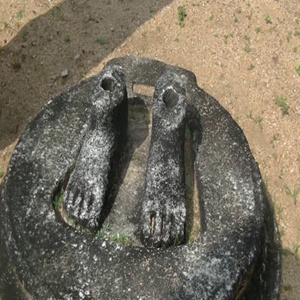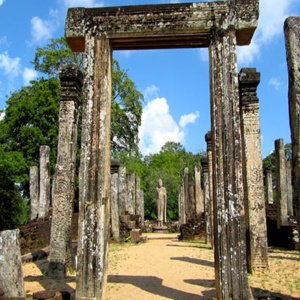


polonnaruwa-atadage
polonnaruwa-atadage-parakramabahu-king
polonnaruwa-atadage-srilanka
The Atadage Dalada Maligaya is situated in the ancient city of Polonnaruwa in the North Central Province of Sri Lanka. Atadage was built by King Vijayabahu I to enshrine the Tooth Relic of Lord Buddha and was the first temple in Polonnaruwa to have the sacred Tooth Relic enshrined. The building was supported by 54 sturdy stone columns. The hallowed Tooth Relic was enshrined on the second floor. This floor was accessed by way of a granite staircase, where a few steps still remain within these ruins.
The Maligaya was home to 3 Buddha Statues and today only one statue remains. This building is supposed to be the only surviving building built by King Vijayabadhu I.
There are many legends of significance that revolve around the name ‘Atadage,’ Ata meaning 8 in Sinhalese. It is quite possible that the name followed the enshrining of the 8 relics which included the main Tooth Relic. On the other hand, the name would have been given due to the fact that the building was completed in 8 days. Many artifacts from buildings of the Anuradhapura era are found at Atadage. E.g. the renowned moonstone lies at the foot of the ruins.
A stone inscription called the “Velikkara’ is of significance as it has been transcribed in Tamil and explains that a Tamil army was hired to safeguard the tooth relic.
Polonnaruwa is a popular city for Sri Lanka’s relics of historical origin. Many Kings reigned from Polonnaruwa and Anuradhapura. Hence the ruins depict the mindset of the Kings and their alliance with the Buddhist religion.
At present the only remains of this hallowed Maligaya are the foundation and the stone columns that relate to the era in which they were constructed.


